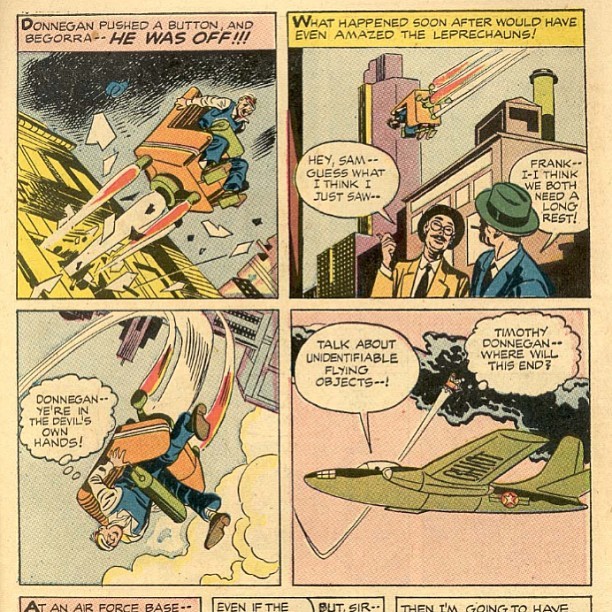"The Simon & Kirby Library: Science Fiction" is one of those comics. It showcases some of their best "unknown" science fiction stories by Joe Simon and Jack Kirby from the 1940's to the early 60's. The stories include the first 10 issues of the superhero Blue Bolt, a variety of short monster and rocket stories from Alarming Tales and Black Cat Mystic, and then their all-too-short run of Race for the Moon, inspired by the Cold War space race.
The past couple of years there have been a lot new nice reprint editions of golden age comics, all of them vying for your comic dollars. For example, I Shall Destroy All The Civilized Planets!
The first reprint that I saw like this was Supermen!: The First Wave Of Comic Book Heroes 1936-1941
The omission of context is even more disappointing given that many of these books are available as public domain scans.
Downloading public domain comics has some advantages
- Free -- always a good price
- Portable. You can read your Golden Age comics on an iPad or other tablet device without worrying about wear and tear
- The works are easily accessible
But there are still problems with the public domain scans
- The quality is not the same as a professionally printed book
- Sometimes scans are not complete, or may be unreliable
- Presentation is limited by the electronic device
- Not all people who are interested in older comics will have the tech savvy to find these sites
- There's usually an interesting introduction by a comics pro who was influenced by these early comics
- Often an essay sets the context for the artist, and the era
- Publishers opt for large-size format with high-quality printing and coloring that shows the comic as it might have appeared (in the best of cases) on the rack in the drugstore
 |
| The reprint of "Hole in the Wall" by Simon & Kirby compared with the same story downloaded from a public domain site and read on an iPad. |
Still, the book left me wanting. The foreward by Dave Gibbons is inspiring, but it arrives from a fan's point of view. I'd like something more... a timeline or an behind-the-scenes an interview? Bits of this are included in the book: an unpublished two-page spread from a 1940's Captain America story is presented beside a re-worked version that appeared in "Win a Prize" comics. There's also a description of a couple pet projects that Joe Simon shopped around in the 60's, 80's, and later coupled with sketches by Kirby.
But I have to compare these reprints to a DVD boxed set with extras! Most Criterion editions of movies have at least one audio commentary, along with trailers, interviews, biographies and documentaries. I'd like to see the editors stretch to include these with the reprints. For example, a time line showing how Kirby was concurrently drawing Young Romance, Black Cat and Quick Trigger Western would be very interesting. It would remind you that Joe Simon, the creator of Blue Bolt, Captain America, The Boy Commandos, and the Fighting American, didn't get much money from his creations, but still had a wealth of creativity.
 |
| A different "Thing". From Race For The Moon #2. |




































